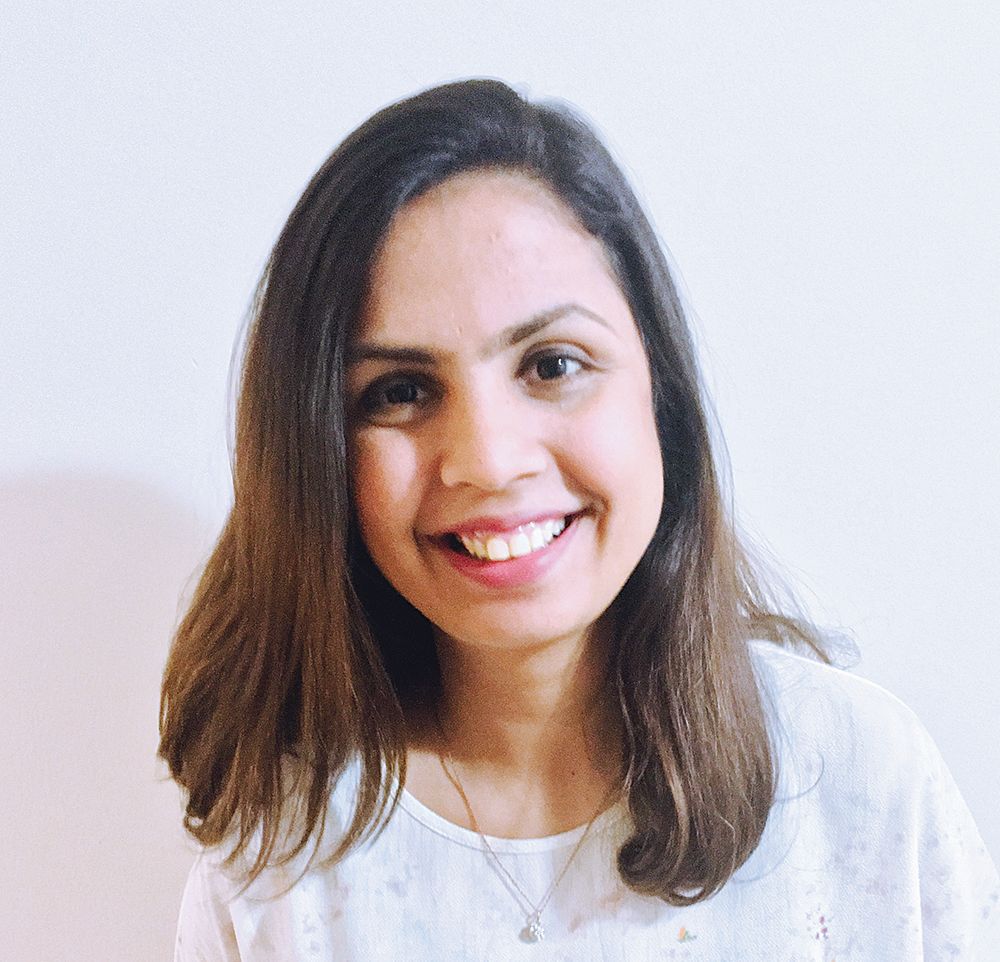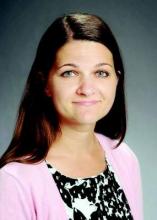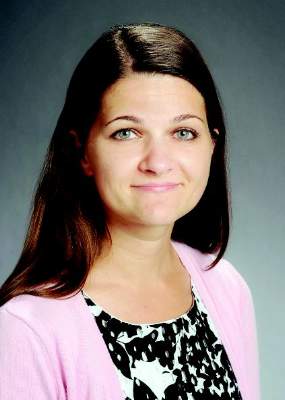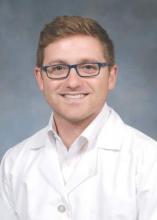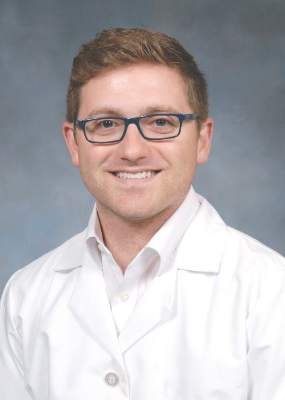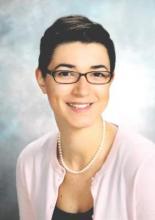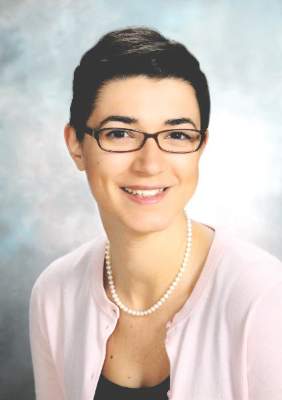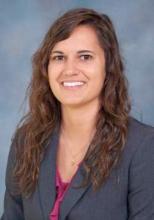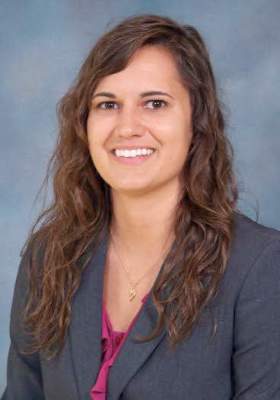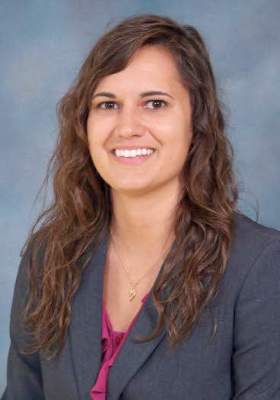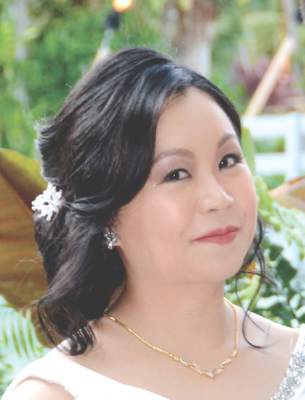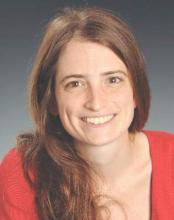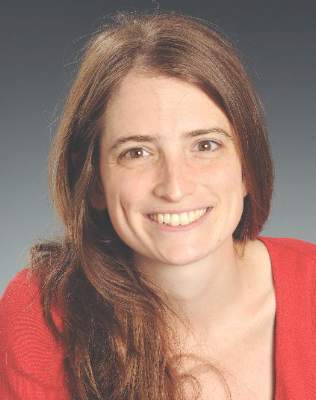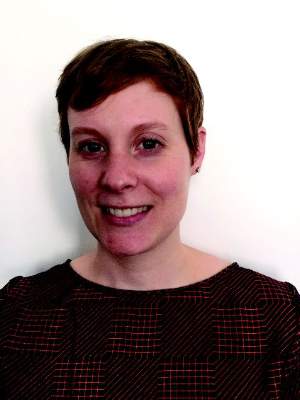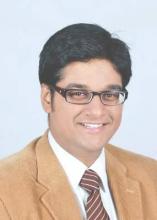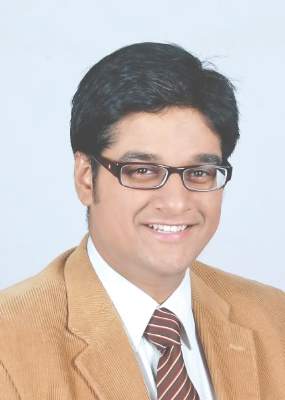User login
Observe, assess, intervene
On most days when I walk into the exam room for a well-child visit, I find an anxious mom or a fretful father sitting next to a fearless child. I quickly shove aside my unrealistic expectation of finding both parents together holding the child. During the progression of my day, I see a diversity of parents playing their parts in caring for their children. It is sometimes a single mom, strong and robust, surrounded by a firm aura of principles and rules; she is concealing all signs of weakness, to make sure her child doesn’t cross any line that she has so cautiously made. Sometimes it is a single mom who is nervous and scared with a galaxy of fear in her eyes, desperately seeking for reassurance of her parenting. Fathers also come playing many roles, from someone struggling with tears as his child gets immunizations, to someone who has parenting in his bag, and skillfully plays eeny meeny miny moe with the little ones in the waiting room.
They all have one thing in common: the immense love for their children and the pressure of being a single or separated parent. It is indeed a reality that I see in most of the clinic rooms – that 60%-70% of children are not living with both mom and dad in the same house. Please note that these are raw data based entirely on my observation. While I watch each parent struggling as mentioned above, my mind often wanders to how each young child copes with such a situation.
What is our role as pediatricians as we walk into the exam room, as we encounter these different family dynamics? To simplify it for myself, I divide it into three categories: Observe, assess, and intervene. Most of the time as physicians, our gut feelings and instincts guide us to where help is needed. It is important to anticipate the changes a family might go through as we meet a first-time single mom or a family who has recently been separated. As we anticipate and observe, it also is important to ask specific questions of parents who may not feel comfortable volunteering this information:
• “Are you and your child undergoing any sort of stress?”
• “How do you think your child is coping with the separation?”
• “Do you identify any flaws in how things are going now?”
Of course, we need to ask questions about stress and family dynamics of all parents. We also should maintain a high level of sensitivity as we approach such questions. It is important to identify any changes in a child’s emotional and social development as we see them on every visit. And when we deem the need, to intervene and identify resources for the family. We also can help parents with ideas for communication with the child; anger management; helping parents and children understand changes; and encouraging open discussion when possible, instead of bottling up unsaid feelings and emotions. This is especially true for single-parent families, but two-parent families undergo stresses as well, for which pediatricians should keep an eye out.
While it is extremely important for us on every well-child visit to ensure that a child’s physical health is up to par, it is equally important not to ignore their emotional and social well-being as we walk in the room so we can help them flourish into the best version of themselves.
Dr. Fatima is a first-year pediatric resident at Albert Einstein Medical Center, Philadelphia. Email her at [email protected].
On most days when I walk into the exam room for a well-child visit, I find an anxious mom or a fretful father sitting next to a fearless child. I quickly shove aside my unrealistic expectation of finding both parents together holding the child. During the progression of my day, I see a diversity of parents playing their parts in caring for their children. It is sometimes a single mom, strong and robust, surrounded by a firm aura of principles and rules; she is concealing all signs of weakness, to make sure her child doesn’t cross any line that she has so cautiously made. Sometimes it is a single mom who is nervous and scared with a galaxy of fear in her eyes, desperately seeking for reassurance of her parenting. Fathers also come playing many roles, from someone struggling with tears as his child gets immunizations, to someone who has parenting in his bag, and skillfully plays eeny meeny miny moe with the little ones in the waiting room.
They all have one thing in common: the immense love for their children and the pressure of being a single or separated parent. It is indeed a reality that I see in most of the clinic rooms – that 60%-70% of children are not living with both mom and dad in the same house. Please note that these are raw data based entirely on my observation. While I watch each parent struggling as mentioned above, my mind often wanders to how each young child copes with such a situation.
What is our role as pediatricians as we walk into the exam room, as we encounter these different family dynamics? To simplify it for myself, I divide it into three categories: Observe, assess, and intervene. Most of the time as physicians, our gut feelings and instincts guide us to where help is needed. It is important to anticipate the changes a family might go through as we meet a first-time single mom or a family who has recently been separated. As we anticipate and observe, it also is important to ask specific questions of parents who may not feel comfortable volunteering this information:
• “Are you and your child undergoing any sort of stress?”
• “How do you think your child is coping with the separation?”
• “Do you identify any flaws in how things are going now?”
Of course, we need to ask questions about stress and family dynamics of all parents. We also should maintain a high level of sensitivity as we approach such questions. It is important to identify any changes in a child’s emotional and social development as we see them on every visit. And when we deem the need, to intervene and identify resources for the family. We also can help parents with ideas for communication with the child; anger management; helping parents and children understand changes; and encouraging open discussion when possible, instead of bottling up unsaid feelings and emotions. This is especially true for single-parent families, but two-parent families undergo stresses as well, for which pediatricians should keep an eye out.
While it is extremely important for us on every well-child visit to ensure that a child’s physical health is up to par, it is equally important not to ignore their emotional and social well-being as we walk in the room so we can help them flourish into the best version of themselves.
Dr. Fatima is a first-year pediatric resident at Albert Einstein Medical Center, Philadelphia. Email her at [email protected].
On most days when I walk into the exam room for a well-child visit, I find an anxious mom or a fretful father sitting next to a fearless child. I quickly shove aside my unrealistic expectation of finding both parents together holding the child. During the progression of my day, I see a diversity of parents playing their parts in caring for their children. It is sometimes a single mom, strong and robust, surrounded by a firm aura of principles and rules; she is concealing all signs of weakness, to make sure her child doesn’t cross any line that she has so cautiously made. Sometimes it is a single mom who is nervous and scared with a galaxy of fear in her eyes, desperately seeking for reassurance of her parenting. Fathers also come playing many roles, from someone struggling with tears as his child gets immunizations, to someone who has parenting in his bag, and skillfully plays eeny meeny miny moe with the little ones in the waiting room.
They all have one thing in common: the immense love for their children and the pressure of being a single or separated parent. It is indeed a reality that I see in most of the clinic rooms – that 60%-70% of children are not living with both mom and dad in the same house. Please note that these are raw data based entirely on my observation. While I watch each parent struggling as mentioned above, my mind often wanders to how each young child copes with such a situation.
What is our role as pediatricians as we walk into the exam room, as we encounter these different family dynamics? To simplify it for myself, I divide it into three categories: Observe, assess, and intervene. Most of the time as physicians, our gut feelings and instincts guide us to where help is needed. It is important to anticipate the changes a family might go through as we meet a first-time single mom or a family who has recently been separated. As we anticipate and observe, it also is important to ask specific questions of parents who may not feel comfortable volunteering this information:
• “Are you and your child undergoing any sort of stress?”
• “How do you think your child is coping with the separation?”
• “Do you identify any flaws in how things are going now?”
Of course, we need to ask questions about stress and family dynamics of all parents. We also should maintain a high level of sensitivity as we approach such questions. It is important to identify any changes in a child’s emotional and social development as we see them on every visit. And when we deem the need, to intervene and identify resources for the family. We also can help parents with ideas for communication with the child; anger management; helping parents and children understand changes; and encouraging open discussion when possible, instead of bottling up unsaid feelings and emotions. This is especially true for single-parent families, but two-parent families undergo stresses as well, for which pediatricians should keep an eye out.
While it is extremely important for us on every well-child visit to ensure that a child’s physical health is up to par, it is equally important not to ignore their emotional and social well-being as we walk in the room so we can help them flourish into the best version of themselves.
Dr. Fatima is a first-year pediatric resident at Albert Einstein Medical Center, Philadelphia. Email her at [email protected].
Breastfeeding in residency
I had my first child during my third year of medical school, and I remember being embarrassed to tell my attending and residents that I needed to pump. I was at the bottom of the training hierarchy and I didn’t want to ask for “special accommodations.” I remember racing to a separate wing of the hospital to pump during my lunch break (if not taken up by lectures), while devouring a sandwich. It quickly became overwhelming, and by the time my daughter was 3 months old, I started supplementing.
I am currently breastfeeding my second child now as a third year pediatric resident. The experience has been much better. My son is 6 months old and is still breastfed! As a resident, I felt more comfortable making everyone aware of my need to pump periodically during work hours. My coresidents and faculty have been very supportive. In fact, I remember my first month back from maternity leave working in the pediatric ICU. I quickly discovered that nearly every floor of the hospital has a lactation room, including the ICU. One time I was in the middle of pumping when my attending paged me with a nonurgent issue. Once finished, I called back and apologized, explaining the reason for my late response. In return, I received an even bigger apology from my attending, who felt bad for disturbing my pumping session. I was moved.
The American Academy of Pediatrics recommends exclusive breastfeeding of healthy term infants for about 6 months.1 Healthy People 2020 set goals of 82% breastfeeding at birth and 61% at 6 months.2 How do we as trainees do? A study published in 1996 looked at 60 female residents who delivered a child during residency. They found that even though 80% initiated breastfeeding, only 15% were still breastfeeding at 6 months. Only 54% of these residents who were breastfeeding after returning to work felt supported by their attending, and 67% felt supported by their colleagues.3 A more recent study published in 2013 looked at breastfeeding during obstetrics residency. Of 89 female residents who had personal experience with breastfeeding, 73% felt supported by their program directors and faculty; and 84% felt supported by colleagues. The rate of breastfeeding at 6 months was now 52%.4
Compared with 1996, breastfeeding practices during residency appear to have improved with much higher rates at 6 months. However, we are slightly below the Healthy People 2020 goals. For the most part, residents feel supported by their attendings and colleagues. With continued support and attention, these goals are well within reach. When it comes to breastfeeding during training, be your own advocate!
References
1. Pediatrics. 2012 Mar;129(3):e827-41.
3. Pediatrics. 1996 Sep;98(3 Pt 1):434-7.
4. Breastfeed Med. 2013 Aug;8(4):394-400.
Dr. Burek is a third-year pediatric resident at the Medical College of Wisconsin and the Children’s Hospital of Wisconsin, both in Milwaukee.
I had my first child during my third year of medical school, and I remember being embarrassed to tell my attending and residents that I needed to pump. I was at the bottom of the training hierarchy and I didn’t want to ask for “special accommodations.” I remember racing to a separate wing of the hospital to pump during my lunch break (if not taken up by lectures), while devouring a sandwich. It quickly became overwhelming, and by the time my daughter was 3 months old, I started supplementing.
I am currently breastfeeding my second child now as a third year pediatric resident. The experience has been much better. My son is 6 months old and is still breastfed! As a resident, I felt more comfortable making everyone aware of my need to pump periodically during work hours. My coresidents and faculty have been very supportive. In fact, I remember my first month back from maternity leave working in the pediatric ICU. I quickly discovered that nearly every floor of the hospital has a lactation room, including the ICU. One time I was in the middle of pumping when my attending paged me with a nonurgent issue. Once finished, I called back and apologized, explaining the reason for my late response. In return, I received an even bigger apology from my attending, who felt bad for disturbing my pumping session. I was moved.
The American Academy of Pediatrics recommends exclusive breastfeeding of healthy term infants for about 6 months.1 Healthy People 2020 set goals of 82% breastfeeding at birth and 61% at 6 months.2 How do we as trainees do? A study published in 1996 looked at 60 female residents who delivered a child during residency. They found that even though 80% initiated breastfeeding, only 15% were still breastfeeding at 6 months. Only 54% of these residents who were breastfeeding after returning to work felt supported by their attending, and 67% felt supported by their colleagues.3 A more recent study published in 2013 looked at breastfeeding during obstetrics residency. Of 89 female residents who had personal experience with breastfeeding, 73% felt supported by their program directors and faculty; and 84% felt supported by colleagues. The rate of breastfeeding at 6 months was now 52%.4
Compared with 1996, breastfeeding practices during residency appear to have improved with much higher rates at 6 months. However, we are slightly below the Healthy People 2020 goals. For the most part, residents feel supported by their attendings and colleagues. With continued support and attention, these goals are well within reach. When it comes to breastfeeding during training, be your own advocate!
References
1. Pediatrics. 2012 Mar;129(3):e827-41.
3. Pediatrics. 1996 Sep;98(3 Pt 1):434-7.
4. Breastfeed Med. 2013 Aug;8(4):394-400.
Dr. Burek is a third-year pediatric resident at the Medical College of Wisconsin and the Children’s Hospital of Wisconsin, both in Milwaukee.
I had my first child during my third year of medical school, and I remember being embarrassed to tell my attending and residents that I needed to pump. I was at the bottom of the training hierarchy and I didn’t want to ask for “special accommodations.” I remember racing to a separate wing of the hospital to pump during my lunch break (if not taken up by lectures), while devouring a sandwich. It quickly became overwhelming, and by the time my daughter was 3 months old, I started supplementing.
I am currently breastfeeding my second child now as a third year pediatric resident. The experience has been much better. My son is 6 months old and is still breastfed! As a resident, I felt more comfortable making everyone aware of my need to pump periodically during work hours. My coresidents and faculty have been very supportive. In fact, I remember my first month back from maternity leave working in the pediatric ICU. I quickly discovered that nearly every floor of the hospital has a lactation room, including the ICU. One time I was in the middle of pumping when my attending paged me with a nonurgent issue. Once finished, I called back and apologized, explaining the reason for my late response. In return, I received an even bigger apology from my attending, who felt bad for disturbing my pumping session. I was moved.
The American Academy of Pediatrics recommends exclusive breastfeeding of healthy term infants for about 6 months.1 Healthy People 2020 set goals of 82% breastfeeding at birth and 61% at 6 months.2 How do we as trainees do? A study published in 1996 looked at 60 female residents who delivered a child during residency. They found that even though 80% initiated breastfeeding, only 15% were still breastfeeding at 6 months. Only 54% of these residents who were breastfeeding after returning to work felt supported by their attending, and 67% felt supported by their colleagues.3 A more recent study published in 2013 looked at breastfeeding during obstetrics residency. Of 89 female residents who had personal experience with breastfeeding, 73% felt supported by their program directors and faculty; and 84% felt supported by colleagues. The rate of breastfeeding at 6 months was now 52%.4
Compared with 1996, breastfeeding practices during residency appear to have improved with much higher rates at 6 months. However, we are slightly below the Healthy People 2020 goals. For the most part, residents feel supported by their attendings and colleagues. With continued support and attention, these goals are well within reach. When it comes to breastfeeding during training, be your own advocate!
References
1. Pediatrics. 2012 Mar;129(3):e827-41.
3. Pediatrics. 1996 Sep;98(3 Pt 1):434-7.
4. Breastfeed Med. 2013 Aug;8(4):394-400.
Dr. Burek is a third-year pediatric resident at the Medical College of Wisconsin and the Children’s Hospital of Wisconsin, both in Milwaukee.
No more popping, swatting, slapping, and spanking
During a recent primary care rotation in northeast Philadelphia, I was privileged to witness a community experience on a daily basis. Each morning I took the elevated subway to the end of the line out of the city, and transferred to a bus to get to the office. The 24 bus at 8:30 a.m. has the same faces every day, making their way to work at various stops along the route. There was also a mother of a particularly cute set of twin boys. Every day she also got on the “El” and transferred to the bus with me, in order to get her boys to the day care she also went to as a child, where she told me she trusted her kids so much it was worth the daily trip.
On my last day of the rotation, enjoying the familiar scene again of people saying good morning to each other on the 24, everyone’s pleasant morning was suddenly interrupted. The twins were being particularly annoying to their mother that day, and she began disciplining them. The entire bus witnessed this: a mother “popping” her boys on the arms repeatedly while yelling loudly, “No hitting! You don’t hit each other and you don’t hit mommy!”
As a pediatrician, this was hard to watch. “Popping” is a common practice here in Philadelphia, and it involves a quick but loud slap that leaves no mark and I assume only stings a second or two, and thus is not too physically harmful. I chose not to speak up as they are not my patients, and it was not my place to be confrontational at that moment. But the thought that went through my head immediately was, “How can this caring and well-intentioned mother expect her sons to learn the lesson to not hit while she is doing exactly that?”
Get online and you’ll see plenty of bloggers arguing the topic of popping, swatting, slapping, and spanking. People say, “My generation was spanked and we turned out fine!” or “It toughens kids up and teaches them discipline.” But the main problem here is the mixed message. The old adage, “Do as I say and not as I do,” simply does not work in childhood. The young developing brain of a child can’t make that distinction, and learning by example from their most loved ones on this planet – their parents – is the single most influential factor in their education.
Just because something is common does not make it right. A few short decades ago seat belts were not commonly worn, and we all know of their benefits now. Currently in America, obesity is becoming the normal body shape for adults and children alike, and every physician is trying their best to combat it. Popping, swatting, slapping, and spanking, in this pediatric resident’s opinion, is far too common, and if explained to parents why the practice is counter-intuitive and ineffectual, I do hope it can be a thing of the past some day, too.
Dr. Beardmore is a pediatric resident at Albert Einstein Medical Center and St. Christopher’s Hospital for Children, Philadelphia. Email him at [email protected].
During a recent primary care rotation in northeast Philadelphia, I was privileged to witness a community experience on a daily basis. Each morning I took the elevated subway to the end of the line out of the city, and transferred to a bus to get to the office. The 24 bus at 8:30 a.m. has the same faces every day, making their way to work at various stops along the route. There was also a mother of a particularly cute set of twin boys. Every day she also got on the “El” and transferred to the bus with me, in order to get her boys to the day care she also went to as a child, where she told me she trusted her kids so much it was worth the daily trip.
On my last day of the rotation, enjoying the familiar scene again of people saying good morning to each other on the 24, everyone’s pleasant morning was suddenly interrupted. The twins were being particularly annoying to their mother that day, and she began disciplining them. The entire bus witnessed this: a mother “popping” her boys on the arms repeatedly while yelling loudly, “No hitting! You don’t hit each other and you don’t hit mommy!”
As a pediatrician, this was hard to watch. “Popping” is a common practice here in Philadelphia, and it involves a quick but loud slap that leaves no mark and I assume only stings a second or two, and thus is not too physically harmful. I chose not to speak up as they are not my patients, and it was not my place to be confrontational at that moment. But the thought that went through my head immediately was, “How can this caring and well-intentioned mother expect her sons to learn the lesson to not hit while she is doing exactly that?”
Get online and you’ll see plenty of bloggers arguing the topic of popping, swatting, slapping, and spanking. People say, “My generation was spanked and we turned out fine!” or “It toughens kids up and teaches them discipline.” But the main problem here is the mixed message. The old adage, “Do as I say and not as I do,” simply does not work in childhood. The young developing brain of a child can’t make that distinction, and learning by example from their most loved ones on this planet – their parents – is the single most influential factor in their education.
Just because something is common does not make it right. A few short decades ago seat belts were not commonly worn, and we all know of their benefits now. Currently in America, obesity is becoming the normal body shape for adults and children alike, and every physician is trying their best to combat it. Popping, swatting, slapping, and spanking, in this pediatric resident’s opinion, is far too common, and if explained to parents why the practice is counter-intuitive and ineffectual, I do hope it can be a thing of the past some day, too.
Dr. Beardmore is a pediatric resident at Albert Einstein Medical Center and St. Christopher’s Hospital for Children, Philadelphia. Email him at [email protected].
During a recent primary care rotation in northeast Philadelphia, I was privileged to witness a community experience on a daily basis. Each morning I took the elevated subway to the end of the line out of the city, and transferred to a bus to get to the office. The 24 bus at 8:30 a.m. has the same faces every day, making their way to work at various stops along the route. There was also a mother of a particularly cute set of twin boys. Every day she also got on the “El” and transferred to the bus with me, in order to get her boys to the day care she also went to as a child, where she told me she trusted her kids so much it was worth the daily trip.
On my last day of the rotation, enjoying the familiar scene again of people saying good morning to each other on the 24, everyone’s pleasant morning was suddenly interrupted. The twins were being particularly annoying to their mother that day, and she began disciplining them. The entire bus witnessed this: a mother “popping” her boys on the arms repeatedly while yelling loudly, “No hitting! You don’t hit each other and you don’t hit mommy!”
As a pediatrician, this was hard to watch. “Popping” is a common practice here in Philadelphia, and it involves a quick but loud slap that leaves no mark and I assume only stings a second or two, and thus is not too physically harmful. I chose not to speak up as they are not my patients, and it was not my place to be confrontational at that moment. But the thought that went through my head immediately was, “How can this caring and well-intentioned mother expect her sons to learn the lesson to not hit while she is doing exactly that?”
Get online and you’ll see plenty of bloggers arguing the topic of popping, swatting, slapping, and spanking. People say, “My generation was spanked and we turned out fine!” or “It toughens kids up and teaches them discipline.” But the main problem here is the mixed message. The old adage, “Do as I say and not as I do,” simply does not work in childhood. The young developing brain of a child can’t make that distinction, and learning by example from their most loved ones on this planet – their parents – is the single most influential factor in their education.
Just because something is common does not make it right. A few short decades ago seat belts were not commonly worn, and we all know of their benefits now. Currently in America, obesity is becoming the normal body shape for adults and children alike, and every physician is trying their best to combat it. Popping, swatting, slapping, and spanking, in this pediatric resident’s opinion, is far too common, and if explained to parents why the practice is counter-intuitive and ineffectual, I do hope it can be a thing of the past some day, too.
Dr. Beardmore is a pediatric resident at Albert Einstein Medical Center and St. Christopher’s Hospital for Children, Philadelphia. Email him at [email protected].
A prescription for health literacy
As physicians, we have a responsibility to stay abreast of the medical literature to provide state of the art pediatric care. We have at our disposal reliable resources to stay current, from professional organizations that provide us with updated practice guidelines, to scientific publications with cutting-edge medical research and clinical databases that offer support for medical decision making.
The greater public, however, does not have the luxury of a guide to navigate the health information ocean. In addition to traditional news outlets, such as television and the printed press, the advent of the Internet and social media have placed unprecedented amounts of medical information at everyone’s fingertips.1 But not all health information is created equal, and even “Dr. Google” has admitted its symptoms search engine has not been very helpful.2
Many websites, despite authoritarian-sounding domain names, are not impartial providers of medical information. The power of the media to shape public perception is perhaps nowhere more poignantly felt than in the pediatric community, where the now thoroughly debunked study by Dr. Andrew Wakefield that linked the MMR vaccine to autism continues to have lingering effects on vaccination rates.3,4
I recently completed an internship in medical journalism with ABC News in New York City to better understand how the news media provides health and medical information to millions of Americans. Lay medical journalists have the complicated task of reviewing new research, weighing its newsworthiness, and distilling complex concepts down to easy-to-digest sound bites. Working with medical correspondents and the editorial team, I reviewed new scientific studies, dissected their impact, and pondered their potential for a catchy headline. I also wrote content for medical segments and participated in educational Twitter chats. What made the headlines wasn’t always what I thought should make the headlines, and translating the results of a randomized, controlled trial into a 60-second script for television felt near impossible. Dipping my toes into medical journalism gave me a new appreciation of my role as a physician educator – avoiding health information overload and promoting meaningful health literacy for my patients.
The 24/7 medical news cycle is here to stay. Our patients will continue to use various media platforms for medical information whether we like it or not. It is our responsibility as pediatricians to help families get the most relevant and current medical information. By directing them to trustworthy sources, such as the American Academy of Pediatrics at healthychildren.org or the National Library of Medicine at www.nlm.nih.gov/medlineplus, we can strengthen our therapeutic alliance while promoting health literacy.
References
1. Interact J Med Res. 2015 Jun 22;4(2):e12.
3. “A Discredited Vaccine Study’s Continuing Impact on Public Health,” by Clyde Haberman, Feb. 1, 2015.
4. Ann Pharmacother. 2011 Oct;45(10):1302-4.
Dr. Talbot is a third-year resident at Monroe Carell Jr. Children’s Hospital at Vanderbilt in Nashville, Tenn. She said she had no relevant financial disclosures. Email her at [email protected].
As physicians, we have a responsibility to stay abreast of the medical literature to provide state of the art pediatric care. We have at our disposal reliable resources to stay current, from professional organizations that provide us with updated practice guidelines, to scientific publications with cutting-edge medical research and clinical databases that offer support for medical decision making.
The greater public, however, does not have the luxury of a guide to navigate the health information ocean. In addition to traditional news outlets, such as television and the printed press, the advent of the Internet and social media have placed unprecedented amounts of medical information at everyone’s fingertips.1 But not all health information is created equal, and even “Dr. Google” has admitted its symptoms search engine has not been very helpful.2
Many websites, despite authoritarian-sounding domain names, are not impartial providers of medical information. The power of the media to shape public perception is perhaps nowhere more poignantly felt than in the pediatric community, where the now thoroughly debunked study by Dr. Andrew Wakefield that linked the MMR vaccine to autism continues to have lingering effects on vaccination rates.3,4
I recently completed an internship in medical journalism with ABC News in New York City to better understand how the news media provides health and medical information to millions of Americans. Lay medical journalists have the complicated task of reviewing new research, weighing its newsworthiness, and distilling complex concepts down to easy-to-digest sound bites. Working with medical correspondents and the editorial team, I reviewed new scientific studies, dissected their impact, and pondered their potential for a catchy headline. I also wrote content for medical segments and participated in educational Twitter chats. What made the headlines wasn’t always what I thought should make the headlines, and translating the results of a randomized, controlled trial into a 60-second script for television felt near impossible. Dipping my toes into medical journalism gave me a new appreciation of my role as a physician educator – avoiding health information overload and promoting meaningful health literacy for my patients.
The 24/7 medical news cycle is here to stay. Our patients will continue to use various media platforms for medical information whether we like it or not. It is our responsibility as pediatricians to help families get the most relevant and current medical information. By directing them to trustworthy sources, such as the American Academy of Pediatrics at healthychildren.org or the National Library of Medicine at www.nlm.nih.gov/medlineplus, we can strengthen our therapeutic alliance while promoting health literacy.
References
1. Interact J Med Res. 2015 Jun 22;4(2):e12.
3. “A Discredited Vaccine Study’s Continuing Impact on Public Health,” by Clyde Haberman, Feb. 1, 2015.
4. Ann Pharmacother. 2011 Oct;45(10):1302-4.
Dr. Talbot is a third-year resident at Monroe Carell Jr. Children’s Hospital at Vanderbilt in Nashville, Tenn. She said she had no relevant financial disclosures. Email her at [email protected].
As physicians, we have a responsibility to stay abreast of the medical literature to provide state of the art pediatric care. We have at our disposal reliable resources to stay current, from professional organizations that provide us with updated practice guidelines, to scientific publications with cutting-edge medical research and clinical databases that offer support for medical decision making.
The greater public, however, does not have the luxury of a guide to navigate the health information ocean. In addition to traditional news outlets, such as television and the printed press, the advent of the Internet and social media have placed unprecedented amounts of medical information at everyone’s fingertips.1 But not all health information is created equal, and even “Dr. Google” has admitted its symptoms search engine has not been very helpful.2
Many websites, despite authoritarian-sounding domain names, are not impartial providers of medical information. The power of the media to shape public perception is perhaps nowhere more poignantly felt than in the pediatric community, where the now thoroughly debunked study by Dr. Andrew Wakefield that linked the MMR vaccine to autism continues to have lingering effects on vaccination rates.3,4
I recently completed an internship in medical journalism with ABC News in New York City to better understand how the news media provides health and medical information to millions of Americans. Lay medical journalists have the complicated task of reviewing new research, weighing its newsworthiness, and distilling complex concepts down to easy-to-digest sound bites. Working with medical correspondents and the editorial team, I reviewed new scientific studies, dissected their impact, and pondered their potential for a catchy headline. I also wrote content for medical segments and participated in educational Twitter chats. What made the headlines wasn’t always what I thought should make the headlines, and translating the results of a randomized, controlled trial into a 60-second script for television felt near impossible. Dipping my toes into medical journalism gave me a new appreciation of my role as a physician educator – avoiding health information overload and promoting meaningful health literacy for my patients.
The 24/7 medical news cycle is here to stay. Our patients will continue to use various media platforms for medical information whether we like it or not. It is our responsibility as pediatricians to help families get the most relevant and current medical information. By directing them to trustworthy sources, such as the American Academy of Pediatrics at healthychildren.org or the National Library of Medicine at www.nlm.nih.gov/medlineplus, we can strengthen our therapeutic alliance while promoting health literacy.
References
1. Interact J Med Res. 2015 Jun 22;4(2):e12.
3. “A Discredited Vaccine Study’s Continuing Impact on Public Health,” by Clyde Haberman, Feb. 1, 2015.
4. Ann Pharmacother. 2011 Oct;45(10):1302-4.
Dr. Talbot is a third-year resident at Monroe Carell Jr. Children’s Hospital at Vanderbilt in Nashville, Tenn. She said she had no relevant financial disclosures. Email her at [email protected].
It’s imperative to protect adolescents with HPV vaccine
Low vaccination rates in the United States are in large part due to parental and religious objections to this vaccination that can be overcome by better education and support by pediatricians. It’s been demonstrated that physicians encourage the HPV vaccine less strongly than the other adolescent vaccinations such as Tdap and the meningococcal conjugate vaccine1. In addition, there is a lack of legislation promoting this vaccine. There are only two states and Washington, D.C., that currently have opt-out state mandates for HPV immunization, compared with 46 states plus Washington, D.C., with similar policies for Tdap2. The HPV vaccine is safe, efficacious, and has been demonstrated to reduce mortality and morbidity in our population. It is imperative that we, as pediatricians, strongly encourage and provide these vaccinations to our adolescent patients to help protect our community.
The human papillomavirus (HPV) vaccine was approved for girls in 2008 and for boys in 20113. However, the adoption rate for HPV immunization in the United States has been dismal. Data from 2014 show only 60% of adolescent girls have received at least one HPV vaccine dose, and only 40% have received three doses4. The rates for boys are far worse, with 42% of adolescent boys receiving at least one dose, and only 22% receiving three doses4.
HPV is currently the most common sexually transmitted infection in the United States, with an estimated 14 million new infections per year3. Of these, approximately 11,000 will progress to cervical cancers and 9,000 to male anogenital cancers each year. Annually there are about 4,000 cervical cancer deaths in the United States3.
Three vaccines are approved by the Food and Drug Administration to prevent HPV infection: Gardasil, Gardasil 9, and Cervarix. All three vaccines prevent infections with HPV types 16 and 18, two high-risk HPVs that cause about 70% of cervical cancers (as well as oropharyngeal and other anogenital cancers). Gardasil also prevents infection with HPV types 6 and 11, associated with approximately 90% of anogenital warts. Gardasil 9 prevents infection with the same four HPV types plus five other high-risk HPV types (31, 33, 45, 52, and 58); it is called a nonavalent, or 9-valent, vaccine.
The HPV vaccines have the ability to reduce mortality and morbidity in our patients. A study published in the New England Journal of Medicine in 2011 demonstrated that vaccination with the full HPV series in males 16-26 years prior to HPV exposure led to a 90% efficacy in preventing HPV-related disease5, compared with a 60% efficacy if given after HPV exposure or if the individual received an incomplete dose series.
A recent Pediatrics study reported data since initiation of the vaccination program in American adolescent and young adult women6. The data showed a reduction in HPV-related disease of 64% in the 14- to 19-year age group and a reduction of 34% in the older age group (aged 20-24 years). This is impressive given our currently low vaccination rates.
A Lancet meta-analysis shows evidence of herd immunity and cross-protective effects when vaccination rates are greater than 50% in the population7. This allows groups that aren’t currently approved for vaccination to have a reduction in disease and allows for some protection against HPV types that aren’t currently covered by the vaccines.
So we pediatricians have a job to do in protecting our patients by encouraging HPV immunization.
References
1. Pediatrics. 2016 Feb;137(2):1-9.
3. www.cdc.gov/hpv/hcp/clinician-factsheet.html
5. N Engl J Med. 2011;364(5):401-11.
6. Pediatrics. 2016;137(3):1-9.
7. Lancet Infect Dis. 2015;15(5):565-80.
Dr. Denby is a second-year internal medicine/pediatrics resident at Vanderbilt University Medical Center in Nashville, Tenn.
Low vaccination rates in the United States are in large part due to parental and religious objections to this vaccination that can be overcome by better education and support by pediatricians. It’s been demonstrated that physicians encourage the HPV vaccine less strongly than the other adolescent vaccinations such as Tdap and the meningococcal conjugate vaccine1. In addition, there is a lack of legislation promoting this vaccine. There are only two states and Washington, D.C., that currently have opt-out state mandates for HPV immunization, compared with 46 states plus Washington, D.C., with similar policies for Tdap2. The HPV vaccine is safe, efficacious, and has been demonstrated to reduce mortality and morbidity in our population. It is imperative that we, as pediatricians, strongly encourage and provide these vaccinations to our adolescent patients to help protect our community.
The human papillomavirus (HPV) vaccine was approved for girls in 2008 and for boys in 20113. However, the adoption rate for HPV immunization in the United States has been dismal. Data from 2014 show only 60% of adolescent girls have received at least one HPV vaccine dose, and only 40% have received three doses4. The rates for boys are far worse, with 42% of adolescent boys receiving at least one dose, and only 22% receiving three doses4.
HPV is currently the most common sexually transmitted infection in the United States, with an estimated 14 million new infections per year3. Of these, approximately 11,000 will progress to cervical cancers and 9,000 to male anogenital cancers each year. Annually there are about 4,000 cervical cancer deaths in the United States3.
Three vaccines are approved by the Food and Drug Administration to prevent HPV infection: Gardasil, Gardasil 9, and Cervarix. All three vaccines prevent infections with HPV types 16 and 18, two high-risk HPVs that cause about 70% of cervical cancers (as well as oropharyngeal and other anogenital cancers). Gardasil also prevents infection with HPV types 6 and 11, associated with approximately 90% of anogenital warts. Gardasil 9 prevents infection with the same four HPV types plus five other high-risk HPV types (31, 33, 45, 52, and 58); it is called a nonavalent, or 9-valent, vaccine.
The HPV vaccines have the ability to reduce mortality and morbidity in our patients. A study published in the New England Journal of Medicine in 2011 demonstrated that vaccination with the full HPV series in males 16-26 years prior to HPV exposure led to a 90% efficacy in preventing HPV-related disease5, compared with a 60% efficacy if given after HPV exposure or if the individual received an incomplete dose series.
A recent Pediatrics study reported data since initiation of the vaccination program in American adolescent and young adult women6. The data showed a reduction in HPV-related disease of 64% in the 14- to 19-year age group and a reduction of 34% in the older age group (aged 20-24 years). This is impressive given our currently low vaccination rates.
A Lancet meta-analysis shows evidence of herd immunity and cross-protective effects when vaccination rates are greater than 50% in the population7. This allows groups that aren’t currently approved for vaccination to have a reduction in disease and allows for some protection against HPV types that aren’t currently covered by the vaccines.
So we pediatricians have a job to do in protecting our patients by encouraging HPV immunization.
References
1. Pediatrics. 2016 Feb;137(2):1-9.
3. www.cdc.gov/hpv/hcp/clinician-factsheet.html
5. N Engl J Med. 2011;364(5):401-11.
6. Pediatrics. 2016;137(3):1-9.
7. Lancet Infect Dis. 2015;15(5):565-80.
Dr. Denby is a second-year internal medicine/pediatrics resident at Vanderbilt University Medical Center in Nashville, Tenn.
Low vaccination rates in the United States are in large part due to parental and religious objections to this vaccination that can be overcome by better education and support by pediatricians. It’s been demonstrated that physicians encourage the HPV vaccine less strongly than the other adolescent vaccinations such as Tdap and the meningococcal conjugate vaccine1. In addition, there is a lack of legislation promoting this vaccine. There are only two states and Washington, D.C., that currently have opt-out state mandates for HPV immunization, compared with 46 states plus Washington, D.C., with similar policies for Tdap2. The HPV vaccine is safe, efficacious, and has been demonstrated to reduce mortality and morbidity in our population. It is imperative that we, as pediatricians, strongly encourage and provide these vaccinations to our adolescent patients to help protect our community.
The human papillomavirus (HPV) vaccine was approved for girls in 2008 and for boys in 20113. However, the adoption rate for HPV immunization in the United States has been dismal. Data from 2014 show only 60% of adolescent girls have received at least one HPV vaccine dose, and only 40% have received three doses4. The rates for boys are far worse, with 42% of adolescent boys receiving at least one dose, and only 22% receiving three doses4.
HPV is currently the most common sexually transmitted infection in the United States, with an estimated 14 million new infections per year3. Of these, approximately 11,000 will progress to cervical cancers and 9,000 to male anogenital cancers each year. Annually there are about 4,000 cervical cancer deaths in the United States3.
Three vaccines are approved by the Food and Drug Administration to prevent HPV infection: Gardasil, Gardasil 9, and Cervarix. All three vaccines prevent infections with HPV types 16 and 18, two high-risk HPVs that cause about 70% of cervical cancers (as well as oropharyngeal and other anogenital cancers). Gardasil also prevents infection with HPV types 6 and 11, associated with approximately 90% of anogenital warts. Gardasil 9 prevents infection with the same four HPV types plus five other high-risk HPV types (31, 33, 45, 52, and 58); it is called a nonavalent, or 9-valent, vaccine.
The HPV vaccines have the ability to reduce mortality and morbidity in our patients. A study published in the New England Journal of Medicine in 2011 demonstrated that vaccination with the full HPV series in males 16-26 years prior to HPV exposure led to a 90% efficacy in preventing HPV-related disease5, compared with a 60% efficacy if given after HPV exposure or if the individual received an incomplete dose series.
A recent Pediatrics study reported data since initiation of the vaccination program in American adolescent and young adult women6. The data showed a reduction in HPV-related disease of 64% in the 14- to 19-year age group and a reduction of 34% in the older age group (aged 20-24 years). This is impressive given our currently low vaccination rates.
A Lancet meta-analysis shows evidence of herd immunity and cross-protective effects when vaccination rates are greater than 50% in the population7. This allows groups that aren’t currently approved for vaccination to have a reduction in disease and allows for some protection against HPV types that aren’t currently covered by the vaccines.
So we pediatricians have a job to do in protecting our patients by encouraging HPV immunization.
References
1. Pediatrics. 2016 Feb;137(2):1-9.
3. www.cdc.gov/hpv/hcp/clinician-factsheet.html
5. N Engl J Med. 2011;364(5):401-11.
6. Pediatrics. 2016;137(3):1-9.
7. Lancet Infect Dis. 2015;15(5):565-80.
Dr. Denby is a second-year internal medicine/pediatrics resident at Vanderbilt University Medical Center in Nashville, Tenn.
It’s imperative to protect adolescents with HPV vaccine
Low vaccination rates in the United States are in large part due to parental and religious objections to this vaccination that can be overcome by better education and support by pediatricians. It’s been demonstrated that physicians encourage the HPV vaccine less strongly than the other adolescent vaccinations such as Tdap and the meningococcal conjugate vaccine1. In addition, there is a lack of legislation promoting this vaccine. There are only two states and Washington, D.C., that currently have opt-out state mandates for HPV immunization, compared with 46 states plus Washington, D.C., with similar policies for Tdap2. The HPV vaccine is safe, efficacious, and has been demonstrated to reduce mortality and morbidity in our population. It is imperative that we, as pediatricians, strongly encourage and provide these vaccinations to our adolescent patients to help protect our community.
The human papillomavirus (HPV) vaccine was approved for girls in 2008 and for boys in 20113. However, the adoption rate for HPV immunization in the United States has been dismal. Data from 2014 show only 60% of adolescent girls have received at least one HPV vaccine dose, and only 40% have received three doses4. The rates for boys are far worse, with 42% of adolescent boys receiving at least one dose, and only 22% receiving three doses4.
HPV is currently the most common sexually transmitted infection in the United States, with an estimated 14 million new infections per year3. Of these, approximately 11,000 will progress to cervical cancers and 9,000 to male anogenital cancers each year. Annually there are about 4,000 cervical cancer deaths in the United States3.
Three vaccines are approved by the Food and Drug Administration to prevent HPV infection: Gardasil, Gardasil 9, and Cervarix. All three vaccines prevent infections with HPV types 16 and 18, two high-risk HPVs that cause about 70% of cervical cancers (as well as oropharyngeal and other anogenital cancers). Gardasil also prevents infection with HPV types 6 and 11, associated with approximately 90% of anogenital warts. Gardasil 9 prevents infection with the same four HPV types plus five other high-risk HPV types (31, 33, 45, 52, and 58); it is called a nonavalent, or 9-valent, vaccine.
The HPV vaccines have the ability to reduce mortality and morbidity in our patients. A study published in the New England Journal of Medicine in 2011 demonstrated that vaccination with the full HPV series in males 16-26 years prior to HPV exposure led to a 90% efficacy in preventing HPV-related disease5, compared with a 60% efficacy if given after HPV exposure or if the individual received an incomplete dose series.
A recent Pediatrics study reported data since initiation of the vaccination program in American adolescent and young adult women6. The data showed a reduction in HPV-related disease of 64% in the 14- to 19-year age group and a reduction of 34% in the older age group (aged 20-24 years). This is impressive given our currently low vaccination rates.
A Lancet meta-analysis shows evidence of herd immunity and cross-protective effects when vaccination rates are greater than 50% in the population7. This allows groups that aren’t currently approved for vaccination to have a reduction in disease and allows for some protection against HPV types that aren’t currently covered by the vaccines.
So we pediatricians have a job to do in protecting our patients by encouraging HPV immunization.
References
1. Pediatrics. 2016 Feb;137(2):1-9.
3. www.cdc.gov/hpv/hcp/clinician-factsheet.html
5. N Engl J Med. 2011;364(5):401-11.
6. Pediatrics. 2016;137(3):1-9.
7. Lancet Infect Dis. 2015;15(5):565-80.
Dr. Denby is a second-year internal medicine/pediatrics resident at Vanderbilt University Medical Center in Nashville, Tenn.
Low vaccination rates in the United States are in large part due to parental and religious objections to this vaccination that can be overcome by better education and support by pediatricians. It’s been demonstrated that physicians encourage the HPV vaccine less strongly than the other adolescent vaccinations such as Tdap and the meningococcal conjugate vaccine1. In addition, there is a lack of legislation promoting this vaccine. There are only two states and Washington, D.C., that currently have opt-out state mandates for HPV immunization, compared with 46 states plus Washington, D.C., with similar policies for Tdap2. The HPV vaccine is safe, efficacious, and has been demonstrated to reduce mortality and morbidity in our population. It is imperative that we, as pediatricians, strongly encourage and provide these vaccinations to our adolescent patients to help protect our community.
The human papillomavirus (HPV) vaccine was approved for girls in 2008 and for boys in 20113. However, the adoption rate for HPV immunization in the United States has been dismal. Data from 2014 show only 60% of adolescent girls have received at least one HPV vaccine dose, and only 40% have received three doses4. The rates for boys are far worse, with 42% of adolescent boys receiving at least one dose, and only 22% receiving three doses4.
HPV is currently the most common sexually transmitted infection in the United States, with an estimated 14 million new infections per year3. Of these, approximately 11,000 will progress to cervical cancers and 9,000 to male anogenital cancers each year. Annually there are about 4,000 cervical cancer deaths in the United States3.
Three vaccines are approved by the Food and Drug Administration to prevent HPV infection: Gardasil, Gardasil 9, and Cervarix. All three vaccines prevent infections with HPV types 16 and 18, two high-risk HPVs that cause about 70% of cervical cancers (as well as oropharyngeal and other anogenital cancers). Gardasil also prevents infection with HPV types 6 and 11, associated with approximately 90% of anogenital warts. Gardasil 9 prevents infection with the same four HPV types plus five other high-risk HPV types (31, 33, 45, 52, and 58); it is called a nonavalent, or 9-valent, vaccine.
The HPV vaccines have the ability to reduce mortality and morbidity in our patients. A study published in the New England Journal of Medicine in 2011 demonstrated that vaccination with the full HPV series in males 16-26 years prior to HPV exposure led to a 90% efficacy in preventing HPV-related disease5, compared with a 60% efficacy if given after HPV exposure or if the individual received an incomplete dose series.
A recent Pediatrics study reported data since initiation of the vaccination program in American adolescent and young adult women6. The data showed a reduction in HPV-related disease of 64% in the 14- to 19-year age group and a reduction of 34% in the older age group (aged 20-24 years). This is impressive given our currently low vaccination rates.
A Lancet meta-analysis shows evidence of herd immunity and cross-protective effects when vaccination rates are greater than 50% in the population7. This allows groups that aren’t currently approved for vaccination to have a reduction in disease and allows for some protection against HPV types that aren’t currently covered by the vaccines.
So we pediatricians have a job to do in protecting our patients by encouraging HPV immunization.
References
1. Pediatrics. 2016 Feb;137(2):1-9.
3. www.cdc.gov/hpv/hcp/clinician-factsheet.html
5. N Engl J Med. 2011;364(5):401-11.
6. Pediatrics. 2016;137(3):1-9.
7. Lancet Infect Dis. 2015;15(5):565-80.
Dr. Denby is a second-year internal medicine/pediatrics resident at Vanderbilt University Medical Center in Nashville, Tenn.
Low vaccination rates in the United States are in large part due to parental and religious objections to this vaccination that can be overcome by better education and support by pediatricians. It’s been demonstrated that physicians encourage the HPV vaccine less strongly than the other adolescent vaccinations such as Tdap and the meningococcal conjugate vaccine1. In addition, there is a lack of legislation promoting this vaccine. There are only two states and Washington, D.C., that currently have opt-out state mandates for HPV immunization, compared with 46 states plus Washington, D.C., with similar policies for Tdap2. The HPV vaccine is safe, efficacious, and has been demonstrated to reduce mortality and morbidity in our population. It is imperative that we, as pediatricians, strongly encourage and provide these vaccinations to our adolescent patients to help protect our community.
The human papillomavirus (HPV) vaccine was approved for girls in 2008 and for boys in 20113. However, the adoption rate for HPV immunization in the United States has been dismal. Data from 2014 show only 60% of adolescent girls have received at least one HPV vaccine dose, and only 40% have received three doses4. The rates for boys are far worse, with 42% of adolescent boys receiving at least one dose, and only 22% receiving three doses4.
HPV is currently the most common sexually transmitted infection in the United States, with an estimated 14 million new infections per year3. Of these, approximately 11,000 will progress to cervical cancers and 9,000 to male anogenital cancers each year. Annually there are about 4,000 cervical cancer deaths in the United States3.
Three vaccines are approved by the Food and Drug Administration to prevent HPV infection: Gardasil, Gardasil 9, and Cervarix. All three vaccines prevent infections with HPV types 16 and 18, two high-risk HPVs that cause about 70% of cervical cancers (as well as oropharyngeal and other anogenital cancers). Gardasil also prevents infection with HPV types 6 and 11, associated with approximately 90% of anogenital warts. Gardasil 9 prevents infection with the same four HPV types plus five other high-risk HPV types (31, 33, 45, 52, and 58); it is called a nonavalent, or 9-valent, vaccine.
The HPV vaccines have the ability to reduce mortality and morbidity in our patients. A study published in the New England Journal of Medicine in 2011 demonstrated that vaccination with the full HPV series in males 16-26 years prior to HPV exposure led to a 90% efficacy in preventing HPV-related disease5, compared with a 60% efficacy if given after HPV exposure or if the individual received an incomplete dose series.
A recent Pediatrics study reported data since initiation of the vaccination program in American adolescent and young adult women6. The data showed a reduction in HPV-related disease of 64% in the 14- to 19-year age group and a reduction of 34% in the older age group (aged 20-24 years). This is impressive given our currently low vaccination rates.
A Lancet meta-analysis shows evidence of herd immunity and cross-protective effects when vaccination rates are greater than 50% in the population7. This allows groups that aren’t currently approved for vaccination to have a reduction in disease and allows for some protection against HPV types that aren’t currently covered by the vaccines.
So we pediatricians have a job to do in protecting our patients by encouraging HPV immunization.
References
1. Pediatrics. 2016 Feb;137(2):1-9.
3. www.cdc.gov/hpv/hcp/clinician-factsheet.html
5. N Engl J Med. 2011;364(5):401-11.
6. Pediatrics. 2016;137(3):1-9.
7. Lancet Infect Dis. 2015;15(5):565-80.
Dr. Denby is a second-year internal medicine/pediatrics resident at Vanderbilt University Medical Center in Nashville, Tenn.
Self-directed learning
Never before in history has medicine progressed as quickly as it does today. The half-life of knowledge and practices is shortening, and the ocean of literature continues to amass every day. In this context, it is simply not possible for training programs to teach in didactics everything residents must know to become competent, much less excellent, doctors. Self-directed learning has become a critical part of residents’ education.
How can we make self-directed learning a more successful process? Attending physicians are likely to answer with the old saying, ‘You can lead a horse to water, but you can’t make it drink!’ While this saying points to the fact that self-directed learning requires a thirsty horse, it takes for granted the role of the guide in showing where water is plentiful. We argue that residents’ self-directed learning can be made more successful by recognizing the role of attendings in this process.
In an era of infinite resources, the limiting factor to learning has become time. The more we learn, the more humbled we are by the vastness of what we don’t know. Self-directed learners must be smart in deciding what should be learned. Herein lies the value of attendings, who, whether we are aware or not, shape our learning simply by virtue of their example. We would do well to pay closer attention to them. No textbook can replace their vast experience, which allows them to hone in on relevant details, to quickly develop comprehensive differentials, or revise plans.
But this learning cannot be based on simply observing and blindly emulating our teachers. We refer to Dr. Bloom’s taxonomy for levels of cognitive learning, in saying that these steps will only get us to the most basic levels of learning, which is “knowing” a disease to the extent that we can apply that knowledge in patient care. These can be acquired without significant mental effort; just by listening to morning reports, reading quick tidbits in between taking care of patients, etc. The goal, however, should be utilizing this basic knowledge as a foundation to develop higher levels of learning, namely Analysis, Synthesis, and Evaluation.
An example for analysis would be quickly going over each of the differentials in a disease and learning what distinguishes them. Synthesis is integrating different ideas and creating a customized plan for the particular patient that is found in no book. Lastly, evaluation is the level of cognition needed to be able to appraise and critique the large volume of opinion that we come across, establish our own opinion, and be able to defend it.
Here again our attendings are valuable resources who can guide us in reaching each of these levels. We must be willing to challenge ourselves by challenging our attendings when things do not make sense. It means always questioning why your attending physician made one medical decision versus another. It means also to challenge what we think we know, in order to discover what we don’t know. … Returning to the old adage, perhaps the key to self-directed learning is for the horse to learn his masters’ ways to the well, so he may adapt to an ever-changing environment.
Dr. Hung and Dr. Ramakrishna are pediatric residents at the Metrohealth Medical Center in Cleveland, Ohio. Email them at [email protected].
Never before in history has medicine progressed as quickly as it does today. The half-life of knowledge and practices is shortening, and the ocean of literature continues to amass every day. In this context, it is simply not possible for training programs to teach in didactics everything residents must know to become competent, much less excellent, doctors. Self-directed learning has become a critical part of residents’ education.
How can we make self-directed learning a more successful process? Attending physicians are likely to answer with the old saying, ‘You can lead a horse to water, but you can’t make it drink!’ While this saying points to the fact that self-directed learning requires a thirsty horse, it takes for granted the role of the guide in showing where water is plentiful. We argue that residents’ self-directed learning can be made more successful by recognizing the role of attendings in this process.
In an era of infinite resources, the limiting factor to learning has become time. The more we learn, the more humbled we are by the vastness of what we don’t know. Self-directed learners must be smart in deciding what should be learned. Herein lies the value of attendings, who, whether we are aware or not, shape our learning simply by virtue of their example. We would do well to pay closer attention to them. No textbook can replace their vast experience, which allows them to hone in on relevant details, to quickly develop comprehensive differentials, or revise plans.
But this learning cannot be based on simply observing and blindly emulating our teachers. We refer to Dr. Bloom’s taxonomy for levels of cognitive learning, in saying that these steps will only get us to the most basic levels of learning, which is “knowing” a disease to the extent that we can apply that knowledge in patient care. These can be acquired without significant mental effort; just by listening to morning reports, reading quick tidbits in between taking care of patients, etc. The goal, however, should be utilizing this basic knowledge as a foundation to develop higher levels of learning, namely Analysis, Synthesis, and Evaluation.
An example for analysis would be quickly going over each of the differentials in a disease and learning what distinguishes them. Synthesis is integrating different ideas and creating a customized plan for the particular patient that is found in no book. Lastly, evaluation is the level of cognition needed to be able to appraise and critique the large volume of opinion that we come across, establish our own opinion, and be able to defend it.
Here again our attendings are valuable resources who can guide us in reaching each of these levels. We must be willing to challenge ourselves by challenging our attendings when things do not make sense. It means always questioning why your attending physician made one medical decision versus another. It means also to challenge what we think we know, in order to discover what we don’t know. … Returning to the old adage, perhaps the key to self-directed learning is for the horse to learn his masters’ ways to the well, so he may adapt to an ever-changing environment.
Dr. Hung and Dr. Ramakrishna are pediatric residents at the Metrohealth Medical Center in Cleveland, Ohio. Email them at [email protected].
Never before in history has medicine progressed as quickly as it does today. The half-life of knowledge and practices is shortening, and the ocean of literature continues to amass every day. In this context, it is simply not possible for training programs to teach in didactics everything residents must know to become competent, much less excellent, doctors. Self-directed learning has become a critical part of residents’ education.
How can we make self-directed learning a more successful process? Attending physicians are likely to answer with the old saying, ‘You can lead a horse to water, but you can’t make it drink!’ While this saying points to the fact that self-directed learning requires a thirsty horse, it takes for granted the role of the guide in showing where water is plentiful. We argue that residents’ self-directed learning can be made more successful by recognizing the role of attendings in this process.
In an era of infinite resources, the limiting factor to learning has become time. The more we learn, the more humbled we are by the vastness of what we don’t know. Self-directed learners must be smart in deciding what should be learned. Herein lies the value of attendings, who, whether we are aware or not, shape our learning simply by virtue of their example. We would do well to pay closer attention to them. No textbook can replace their vast experience, which allows them to hone in on relevant details, to quickly develop comprehensive differentials, or revise plans.
But this learning cannot be based on simply observing and blindly emulating our teachers. We refer to Dr. Bloom’s taxonomy for levels of cognitive learning, in saying that these steps will only get us to the most basic levels of learning, which is “knowing” a disease to the extent that we can apply that knowledge in patient care. These can be acquired without significant mental effort; just by listening to morning reports, reading quick tidbits in between taking care of patients, etc. The goal, however, should be utilizing this basic knowledge as a foundation to develop higher levels of learning, namely Analysis, Synthesis, and Evaluation.
An example for analysis would be quickly going over each of the differentials in a disease and learning what distinguishes them. Synthesis is integrating different ideas and creating a customized plan for the particular patient that is found in no book. Lastly, evaluation is the level of cognition needed to be able to appraise and critique the large volume of opinion that we come across, establish our own opinion, and be able to defend it.
Here again our attendings are valuable resources who can guide us in reaching each of these levels. We must be willing to challenge ourselves by challenging our attendings when things do not make sense. It means always questioning why your attending physician made one medical decision versus another. It means also to challenge what we think we know, in order to discover what we don’t know. … Returning to the old adage, perhaps the key to self-directed learning is for the horse to learn his masters’ ways to the well, so he may adapt to an ever-changing environment.
Dr. Hung and Dr. Ramakrishna are pediatric residents at the Metrohealth Medical Center in Cleveland, Ohio. Email them at [email protected].
Use of isolation in juvenile detention centers
Isolation in juvenile detention centers persists despite ample data demonstrating the traumatizing consequences to youth who often already have been traumatized. I recently visited a detention center as part of my pediatric residency’s advocacy rotation. There, I learned that youth are kept in isolation for several days, with a vague definition by staff on the limit of “several days.” Multiple words were used for confinement, the most stunning and horrific of which was “segregation” – “He got into a fight and was placed in segregation.” While in isolation or segregation – whatever it is called – mental illness and posttraumatic stress disorder are exacerbated. Youth do not participate in school classes, and they are barred from the daily hour of physical activity. In extreme cases, they go from complete isolation one day to complete freedom the next.
The vibe word in the facility I visited was “evidence-based strategies,” stressed by the new administration. But evidence-based strategies do not include isolation. They include educating staff about the pervasive effects of trauma in children. They include communication interventions, conflict resolution, and the implementation of rewards such as extra visitation, computer time, or the use of an adolescent’s own personal hygiene items or clothing. They include knowledge of the adolescent brain, and how the use of isolation in juvenile centers has led to increased suicide rates in those children.
Lindsay M. Hayes, author of the National Center on Institutions and Alternatives’ 2004 report “Juvenile Suicide in Confinement: A National Study,” wrote: ”Although room confinement remains a staple in most juvenile facilities, it is a sanction that can have deadly consequences. … More than 50% of all youths’ suicides in juvenile facilities occurred while young people were isolated alone in their rooms, and … more than 60% of young people who committed suicide in custody had a history of being held in isolation.”
The United Nations has called on all countries to absolutely prohibit solitary confinement for juveniles, as has the American Academy of Child and Adolescent Psychiatry. Thus, extreme isolation should not be another tool for juvenile detention centers.
Currently, 20 states have banned solitary confinement in juvenile detention facilities. The major barriers are from staff, who state it would remove a tool, put staff in danger, and allow youth to run the facilities. None of these has been shown to be true. Some juvenile detention centers have changed the traditional meaning of isolation – youth will have a minimum of 8 hours away from isolation when confined for a day or longer. “During that 8 hours, they have the opportunity to talk to and be in the company of staff,” said Adam Schwartz, a lawyer for the American Civil Liberties Union of Illinois, whose lawsuit drastically limited solitary confinement practices in Illinois’s juvenile detention centers. The policy also requires that inmates in isolation continue to receive education and mental health services.
There is a human dignity that not even detainees deserve to lose. President Obama has discussed this, as has the 2012 Report of the Attorney General’s National Task Force on Children Exposed to Violence, which concluded: “Nowhere is the damaging impact of incarceration on vulnerable children more obvious than when it involves solitary confinement.” I am writing this article to raise awareness about this underreported problem in hopes that new legislation will lead to change that is in the best interest of our children.
Dr. Raffa is in postgraduate year 2 in her pediatric residency at Vanderbilt Children’s Hospital in Nashville, Tenn.
Isolation in juvenile detention centers persists despite ample data demonstrating the traumatizing consequences to youth who often already have been traumatized. I recently visited a detention center as part of my pediatric residency’s advocacy rotation. There, I learned that youth are kept in isolation for several days, with a vague definition by staff on the limit of “several days.” Multiple words were used for confinement, the most stunning and horrific of which was “segregation” – “He got into a fight and was placed in segregation.” While in isolation or segregation – whatever it is called – mental illness and posttraumatic stress disorder are exacerbated. Youth do not participate in school classes, and they are barred from the daily hour of physical activity. In extreme cases, they go from complete isolation one day to complete freedom the next.
The vibe word in the facility I visited was “evidence-based strategies,” stressed by the new administration. But evidence-based strategies do not include isolation. They include educating staff about the pervasive effects of trauma in children. They include communication interventions, conflict resolution, and the implementation of rewards such as extra visitation, computer time, or the use of an adolescent’s own personal hygiene items or clothing. They include knowledge of the adolescent brain, and how the use of isolation in juvenile centers has led to increased suicide rates in those children.
Lindsay M. Hayes, author of the National Center on Institutions and Alternatives’ 2004 report “Juvenile Suicide in Confinement: A National Study,” wrote: ”Although room confinement remains a staple in most juvenile facilities, it is a sanction that can have deadly consequences. … More than 50% of all youths’ suicides in juvenile facilities occurred while young people were isolated alone in their rooms, and … more than 60% of young people who committed suicide in custody had a history of being held in isolation.”
The United Nations has called on all countries to absolutely prohibit solitary confinement for juveniles, as has the American Academy of Child and Adolescent Psychiatry. Thus, extreme isolation should not be another tool for juvenile detention centers.
Currently, 20 states have banned solitary confinement in juvenile detention facilities. The major barriers are from staff, who state it would remove a tool, put staff in danger, and allow youth to run the facilities. None of these has been shown to be true. Some juvenile detention centers have changed the traditional meaning of isolation – youth will have a minimum of 8 hours away from isolation when confined for a day or longer. “During that 8 hours, they have the opportunity to talk to and be in the company of staff,” said Adam Schwartz, a lawyer for the American Civil Liberties Union of Illinois, whose lawsuit drastically limited solitary confinement practices in Illinois’s juvenile detention centers. The policy also requires that inmates in isolation continue to receive education and mental health services.
There is a human dignity that not even detainees deserve to lose. President Obama has discussed this, as has the 2012 Report of the Attorney General’s National Task Force on Children Exposed to Violence, which concluded: “Nowhere is the damaging impact of incarceration on vulnerable children more obvious than when it involves solitary confinement.” I am writing this article to raise awareness about this underreported problem in hopes that new legislation will lead to change that is in the best interest of our children.
Dr. Raffa is in postgraduate year 2 in her pediatric residency at Vanderbilt Children’s Hospital in Nashville, Tenn.
Isolation in juvenile detention centers persists despite ample data demonstrating the traumatizing consequences to youth who often already have been traumatized. I recently visited a detention center as part of my pediatric residency’s advocacy rotation. There, I learned that youth are kept in isolation for several days, with a vague definition by staff on the limit of “several days.” Multiple words were used for confinement, the most stunning and horrific of which was “segregation” – “He got into a fight and was placed in segregation.” While in isolation or segregation – whatever it is called – mental illness and posttraumatic stress disorder are exacerbated. Youth do not participate in school classes, and they are barred from the daily hour of physical activity. In extreme cases, they go from complete isolation one day to complete freedom the next.
The vibe word in the facility I visited was “evidence-based strategies,” stressed by the new administration. But evidence-based strategies do not include isolation. They include educating staff about the pervasive effects of trauma in children. They include communication interventions, conflict resolution, and the implementation of rewards such as extra visitation, computer time, or the use of an adolescent’s own personal hygiene items or clothing. They include knowledge of the adolescent brain, and how the use of isolation in juvenile centers has led to increased suicide rates in those children.
Lindsay M. Hayes, author of the National Center on Institutions and Alternatives’ 2004 report “Juvenile Suicide in Confinement: A National Study,” wrote: ”Although room confinement remains a staple in most juvenile facilities, it is a sanction that can have deadly consequences. … More than 50% of all youths’ suicides in juvenile facilities occurred while young people were isolated alone in their rooms, and … more than 60% of young people who committed suicide in custody had a history of being held in isolation.”
The United Nations has called on all countries to absolutely prohibit solitary confinement for juveniles, as has the American Academy of Child and Adolescent Psychiatry. Thus, extreme isolation should not be another tool for juvenile detention centers.
Currently, 20 states have banned solitary confinement in juvenile detention facilities. The major barriers are from staff, who state it would remove a tool, put staff in danger, and allow youth to run the facilities. None of these has been shown to be true. Some juvenile detention centers have changed the traditional meaning of isolation – youth will have a minimum of 8 hours away from isolation when confined for a day or longer. “During that 8 hours, they have the opportunity to talk to and be in the company of staff,” said Adam Schwartz, a lawyer for the American Civil Liberties Union of Illinois, whose lawsuit drastically limited solitary confinement practices in Illinois’s juvenile detention centers. The policy also requires that inmates in isolation continue to receive education and mental health services.
There is a human dignity that not even detainees deserve to lose. President Obama has discussed this, as has the 2012 Report of the Attorney General’s National Task Force on Children Exposed to Violence, which concluded: “Nowhere is the damaging impact of incarceration on vulnerable children more obvious than when it involves solitary confinement.” I am writing this article to raise awareness about this underreported problem in hopes that new legislation will lead to change that is in the best interest of our children.
Dr. Raffa is in postgraduate year 2 in her pediatric residency at Vanderbilt Children’s Hospital in Nashville, Tenn.
The fellowship of motherhood
I expected that having a baby as a pediatric subspecialty fellow was going to be a challenge. But I could never have anticipated how scary it would feel to step into the world on the other side of the clinic door. My friends invited me to join a breastfeeding support group on social media “so that I knew I wasn’t the only one up with my baby at 3 a.m.” I learned a lot more than that.
I learned that some mothers trust anecdotes from strangers more than advice from their pediatricians. They recount unsatisfying visits with their pediatricians and then ask other mothers to comment on the advice. As I sifted through a lot of nonscientific and sometimes medically dangerous advice, I also was offered a new perspective. Many mothers will lie to their pediatricians about sleeping and feeding habits because they don’t want to be judged or don’t want another canned answer. Instead of engaging in discussion, they nod, smile, and return to their online support groups.
Very little literature exists on how to partner with mothers to guide them through the breastfeeding journey. These are intimate and individual journeys for each mother and often for each new child. For most mothers who choose to breastfeed, their infant is asking them to learn a new endurance sport, and the body and mind have to start running a marathon on day 1. Breastfeeding consumes nearly every waking moment of at least the first 6 weeks of the infant’s life. It is the most important, stressful, and wonderful part of their young child’s life to date. Pediatricians need to understand and offer advice that reflects this struggle.
So how do we expect pediatricians to help new mothers when our pediatrics residencies lack a basic breastfeeding curriculum? We need to fix it soon because breastfeeding mothers expect evidence-based breastfeeding advice, and as I learned online, they may even fire you if they don’t like what they hear. Although many pediatricians may feel uncomfortable with counseling an adult woman about her body or even treating her, the American Academy of Pediatrics recommends that we do so (Pediatrics 2012 Mar;129[3]:e827-41). There are even resources available to guide billing of extended breastfeeding visits.
The basic science of breastfeeding and how to counsel on common concerns need to be represented in our residency curriculums, as a lack of training early on can perpetuate itself in practice, leading to pediatricians who give outdated advice, reassure when they should counsel further, or give the mother the impression her concerns are irrelevant. Mothers expect more of us when it comes to breastfeeding, and we should expect it of ourselves.
In the meantime, some resources I found helpful were:
• “The Nursing Mother’s Companion,” by Kathleen Huggins (Boston: Harvard Common Press, 2010). This is a great book to help those in training really understand the stresses and common concerns of breastfeeding moms.
• newborns.stanford.edu/Breastfeeding. This is a good online source for those who want a quick tutorial about the early days of breastfeeding.
• AAP Breastfeeding Residency Curriculum (www2.aap.org/breastfeeding/curriculum/medical_knowledge.html). These are learning modules to build knowledge of lactation pathophysiology and how to address mothers’ common concerns.
• www.drmilk.org. This is a support group for breastfeeding moms who are doctors.
Dr. Fricchione is a pediatric infectious diseases fellow at McGaw Medical Center of Northwestern University and the Ann and Robert H. Lurie Children’s Hospital of Chicago.
I expected that having a baby as a pediatric subspecialty fellow was going to be a challenge. But I could never have anticipated how scary it would feel to step into the world on the other side of the clinic door. My friends invited me to join a breastfeeding support group on social media “so that I knew I wasn’t the only one up with my baby at 3 a.m.” I learned a lot more than that.
I learned that some mothers trust anecdotes from strangers more than advice from their pediatricians. They recount unsatisfying visits with their pediatricians and then ask other mothers to comment on the advice. As I sifted through a lot of nonscientific and sometimes medically dangerous advice, I also was offered a new perspective. Many mothers will lie to their pediatricians about sleeping and feeding habits because they don’t want to be judged or don’t want another canned answer. Instead of engaging in discussion, they nod, smile, and return to their online support groups.
Very little literature exists on how to partner with mothers to guide them through the breastfeeding journey. These are intimate and individual journeys for each mother and often for each new child. For most mothers who choose to breastfeed, their infant is asking them to learn a new endurance sport, and the body and mind have to start running a marathon on day 1. Breastfeeding consumes nearly every waking moment of at least the first 6 weeks of the infant’s life. It is the most important, stressful, and wonderful part of their young child’s life to date. Pediatricians need to understand and offer advice that reflects this struggle.
So how do we expect pediatricians to help new mothers when our pediatrics residencies lack a basic breastfeeding curriculum? We need to fix it soon because breastfeeding mothers expect evidence-based breastfeeding advice, and as I learned online, they may even fire you if they don’t like what they hear. Although many pediatricians may feel uncomfortable with counseling an adult woman about her body or even treating her, the American Academy of Pediatrics recommends that we do so (Pediatrics 2012 Mar;129[3]:e827-41). There are even resources available to guide billing of extended breastfeeding visits.
The basic science of breastfeeding and how to counsel on common concerns need to be represented in our residency curriculums, as a lack of training early on can perpetuate itself in practice, leading to pediatricians who give outdated advice, reassure when they should counsel further, or give the mother the impression her concerns are irrelevant. Mothers expect more of us when it comes to breastfeeding, and we should expect it of ourselves.
In the meantime, some resources I found helpful were:
• “The Nursing Mother’s Companion,” by Kathleen Huggins (Boston: Harvard Common Press, 2010). This is a great book to help those in training really understand the stresses and common concerns of breastfeeding moms.
• newborns.stanford.edu/Breastfeeding. This is a good online source for those who want a quick tutorial about the early days of breastfeeding.
• AAP Breastfeeding Residency Curriculum (www2.aap.org/breastfeeding/curriculum/medical_knowledge.html). These are learning modules to build knowledge of lactation pathophysiology and how to address mothers’ common concerns.
• www.drmilk.org. This is a support group for breastfeeding moms who are doctors.
Dr. Fricchione is a pediatric infectious diseases fellow at McGaw Medical Center of Northwestern University and the Ann and Robert H. Lurie Children’s Hospital of Chicago.
I expected that having a baby as a pediatric subspecialty fellow was going to be a challenge. But I could never have anticipated how scary it would feel to step into the world on the other side of the clinic door. My friends invited me to join a breastfeeding support group on social media “so that I knew I wasn’t the only one up with my baby at 3 a.m.” I learned a lot more than that.
I learned that some mothers trust anecdotes from strangers more than advice from their pediatricians. They recount unsatisfying visits with their pediatricians and then ask other mothers to comment on the advice. As I sifted through a lot of nonscientific and sometimes medically dangerous advice, I also was offered a new perspective. Many mothers will lie to their pediatricians about sleeping and feeding habits because they don’t want to be judged or don’t want another canned answer. Instead of engaging in discussion, they nod, smile, and return to their online support groups.
Very little literature exists on how to partner with mothers to guide them through the breastfeeding journey. These are intimate and individual journeys for each mother and often for each new child. For most mothers who choose to breastfeed, their infant is asking them to learn a new endurance sport, and the body and mind have to start running a marathon on day 1. Breastfeeding consumes nearly every waking moment of at least the first 6 weeks of the infant’s life. It is the most important, stressful, and wonderful part of their young child’s life to date. Pediatricians need to understand and offer advice that reflects this struggle.
So how do we expect pediatricians to help new mothers when our pediatrics residencies lack a basic breastfeeding curriculum? We need to fix it soon because breastfeeding mothers expect evidence-based breastfeeding advice, and as I learned online, they may even fire you if they don’t like what they hear. Although many pediatricians may feel uncomfortable with counseling an adult woman about her body or even treating her, the American Academy of Pediatrics recommends that we do so (Pediatrics 2012 Mar;129[3]:e827-41). There are even resources available to guide billing of extended breastfeeding visits.
The basic science of breastfeeding and how to counsel on common concerns need to be represented in our residency curriculums, as a lack of training early on can perpetuate itself in practice, leading to pediatricians who give outdated advice, reassure when they should counsel further, or give the mother the impression her concerns are irrelevant. Mothers expect more of us when it comes to breastfeeding, and we should expect it of ourselves.
In the meantime, some resources I found helpful were:
• “The Nursing Mother’s Companion,” by Kathleen Huggins (Boston: Harvard Common Press, 2010). This is a great book to help those in training really understand the stresses and common concerns of breastfeeding moms.
• newborns.stanford.edu/Breastfeeding. This is a good online source for those who want a quick tutorial about the early days of breastfeeding.
• AAP Breastfeeding Residency Curriculum (www2.aap.org/breastfeeding/curriculum/medical_knowledge.html). These are learning modules to build knowledge of lactation pathophysiology and how to address mothers’ common concerns.
• www.drmilk.org. This is a support group for breastfeeding moms who are doctors.
Dr. Fricchione is a pediatric infectious diseases fellow at McGaw Medical Center of Northwestern University and the Ann and Robert H. Lurie Children’s Hospital of Chicago.
Where is he now?
A couple made a baby boy. Into him they poured their hopes and dreams. But life is strange with its twists and turns, and things rarely go as planned.
The baby had a rough start. His brain was severely injured. The parents were told the chances of meaningful recovery were close to nothing. With heavy hearts but their son’s best interest in mind, they made the hardest decision of their lives – to provide for his comfort and nothing more. His life supports withdrawn, he was handed to them.
He did not die. Instead, he breathed. With that singular, definitive act, he proved his presence to them. They took him home, unsure what would come next. They did what anyone faced with such terrifying circumstances would have done – they fell in love with their baby. Their goals changed, but their love did not. Tinted by love, his staring spells became looks of cognizance, his reflexes became volitional motions. Think what you may, but do not judge them.
Unexpectedly, he has reached the age of 15 months. Through it all, the mother and father have been the perfect parents of a complex patient. But now he refuses to play the role of stable complex child. Instead, he is steadily worsening. It is easy for me to see this as I take ICU calls every fourth night. Not so for them. I don’t know what it feels like to build a dream and watch it crumble like sand, then to have to learn to carry on with what is left. I cannot imagine living a moment of their lives. Yet there they sit, next to him, waiting for rounds with smiling faces.
We are stuck. We wonder what’s in his best interest – to intervene with an invasive procedure that may allow him to go home or to withdraw interventions and provide him with comfort.
In my eyes, the real question is – where does he live? His parents believe that he is in the body lying on the bed. I can see why they feel this way – if he isn’t there, then what has any of this meant? Has he never been there? Did he leave sometime between defying death and creeping back toward it? These are frightening thoughts to face, indeed. And so, thoroughly entrenched, they must press on lest it be felt that they gave up on him.
I don’t know where he lives. Somewhere else? Heaven perhaps. In his parent’s memories for certain, and in my thoughts as well. In this limp body on the bed? I’m not so sure. But as he stares into his mother’s eyes, and jerks in response to her voice, I begin to doubt myself. How can I help them make this decision?
Perhaps this is the final lesson that residency will teach me.
No. I suspect I still won’t have an answer for the next parents I meet, once his story has played out. Only more questions. …
Dr. Behere was a pediatric resident at the Children’s Hospital at Dartmouth-Hitchcock, Lebanon, N.H., when he wrote this article. He is a first-year fellow in pediatric cardiology at the Nemours Cardiac Center at the Nemours/Alfred I. duPont Hospital for Children, Wilmington, Del. E-mail him at [email protected].
A couple made a baby boy. Into him they poured their hopes and dreams. But life is strange with its twists and turns, and things rarely go as planned.
The baby had a rough start. His brain was severely injured. The parents were told the chances of meaningful recovery were close to nothing. With heavy hearts but their son’s best interest in mind, they made the hardest decision of their lives – to provide for his comfort and nothing more. His life supports withdrawn, he was handed to them.
He did not die. Instead, he breathed. With that singular, definitive act, he proved his presence to them. They took him home, unsure what would come next. They did what anyone faced with such terrifying circumstances would have done – they fell in love with their baby. Their goals changed, but their love did not. Tinted by love, his staring spells became looks of cognizance, his reflexes became volitional motions. Think what you may, but do not judge them.
Unexpectedly, he has reached the age of 15 months. Through it all, the mother and father have been the perfect parents of a complex patient. But now he refuses to play the role of stable complex child. Instead, he is steadily worsening. It is easy for me to see this as I take ICU calls every fourth night. Not so for them. I don’t know what it feels like to build a dream and watch it crumble like sand, then to have to learn to carry on with what is left. I cannot imagine living a moment of their lives. Yet there they sit, next to him, waiting for rounds with smiling faces.
We are stuck. We wonder what’s in his best interest – to intervene with an invasive procedure that may allow him to go home or to withdraw interventions and provide him with comfort.
In my eyes, the real question is – where does he live? His parents believe that he is in the body lying on the bed. I can see why they feel this way – if he isn’t there, then what has any of this meant? Has he never been there? Did he leave sometime between defying death and creeping back toward it? These are frightening thoughts to face, indeed. And so, thoroughly entrenched, they must press on lest it be felt that they gave up on him.
I don’t know where he lives. Somewhere else? Heaven perhaps. In his parent’s memories for certain, and in my thoughts as well. In this limp body on the bed? I’m not so sure. But as he stares into his mother’s eyes, and jerks in response to her voice, I begin to doubt myself. How can I help them make this decision?
Perhaps this is the final lesson that residency will teach me.
No. I suspect I still won’t have an answer for the next parents I meet, once his story has played out. Only more questions. …
Dr. Behere was a pediatric resident at the Children’s Hospital at Dartmouth-Hitchcock, Lebanon, N.H., when he wrote this article. He is a first-year fellow in pediatric cardiology at the Nemours Cardiac Center at the Nemours/Alfred I. duPont Hospital for Children, Wilmington, Del. E-mail him at [email protected].
A couple made a baby boy. Into him they poured their hopes and dreams. But life is strange with its twists and turns, and things rarely go as planned.
The baby had a rough start. His brain was severely injured. The parents were told the chances of meaningful recovery were close to nothing. With heavy hearts but their son’s best interest in mind, they made the hardest decision of their lives – to provide for his comfort and nothing more. His life supports withdrawn, he was handed to them.
He did not die. Instead, he breathed. With that singular, definitive act, he proved his presence to them. They took him home, unsure what would come next. They did what anyone faced with such terrifying circumstances would have done – they fell in love with their baby. Their goals changed, but their love did not. Tinted by love, his staring spells became looks of cognizance, his reflexes became volitional motions. Think what you may, but do not judge them.
Unexpectedly, he has reached the age of 15 months. Through it all, the mother and father have been the perfect parents of a complex patient. But now he refuses to play the role of stable complex child. Instead, he is steadily worsening. It is easy for me to see this as I take ICU calls every fourth night. Not so for them. I don’t know what it feels like to build a dream and watch it crumble like sand, then to have to learn to carry on with what is left. I cannot imagine living a moment of their lives. Yet there they sit, next to him, waiting for rounds with smiling faces.
We are stuck. We wonder what’s in his best interest – to intervene with an invasive procedure that may allow him to go home or to withdraw interventions and provide him with comfort.
In my eyes, the real question is – where does he live? His parents believe that he is in the body lying on the bed. I can see why they feel this way – if he isn’t there, then what has any of this meant? Has he never been there? Did he leave sometime between defying death and creeping back toward it? These are frightening thoughts to face, indeed. And so, thoroughly entrenched, they must press on lest it be felt that they gave up on him.
I don’t know where he lives. Somewhere else? Heaven perhaps. In his parent’s memories for certain, and in my thoughts as well. In this limp body on the bed? I’m not so sure. But as he stares into his mother’s eyes, and jerks in response to her voice, I begin to doubt myself. How can I help them make this decision?
Perhaps this is the final lesson that residency will teach me.
No. I suspect I still won’t have an answer for the next parents I meet, once his story has played out. Only more questions. …
Dr. Behere was a pediatric resident at the Children’s Hospital at Dartmouth-Hitchcock, Lebanon, N.H., when he wrote this article. He is a first-year fellow in pediatric cardiology at the Nemours Cardiac Center at the Nemours/Alfred I. duPont Hospital for Children, Wilmington, Del. E-mail him at [email protected].

